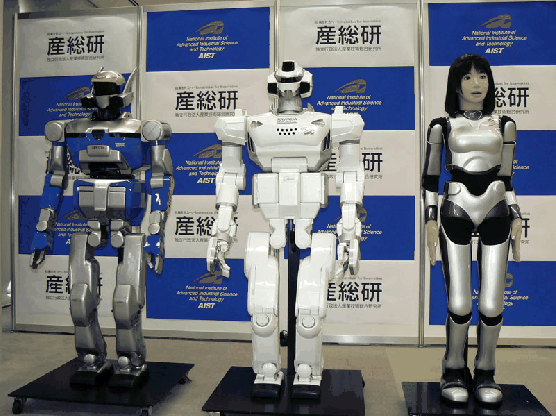
Next: Telepresence Up: 13.3 Robotic Interfaces Previous: Teleoperation Contents Index
 |
 |
Thousands of different robots have been designed and built, some with very special purposes, such as cleaning windows outside of a building, and others for more general purposes, such as assisted living. Figure 13.7 shows humanoid robots that strive for anthropomorphic or ``human like'' appearance. Figure 13.8 shows a sampling of other kinds of robots. Figure 1.12 in Section 1.2 showed two more examples, which were a stereoscopic pan-tilt module and a video-streaming drone.
In addition to hardware, substantial software infrastructure exists to help developers, such ROS (Robot Operating System) and Gazebo. Almost any robot is a candidate platform from which a telerobotic VR interface could be attached. Cameras and microphones serve as the surrogate eyes and ears of the user. A gripper (also called end-effector) could serve as remote hands, if feasible and important for the application. The user can command the robot's motions and actions via keyboards, controllers, voice, or body motions. For a humanoid robot, the human body could even be tracked using motion capture (Section 9.4) and mapped directly onto motions of the humanoid. More generally, any anthropomorphic aspects of a robot could become part of the matched zone. At the other extreme, the robot allows many non-human experiences, such as becoming the size of a small insect and flying around the room, or swimming like a fish in the sea.
Steven M LaValle 2020-11-11